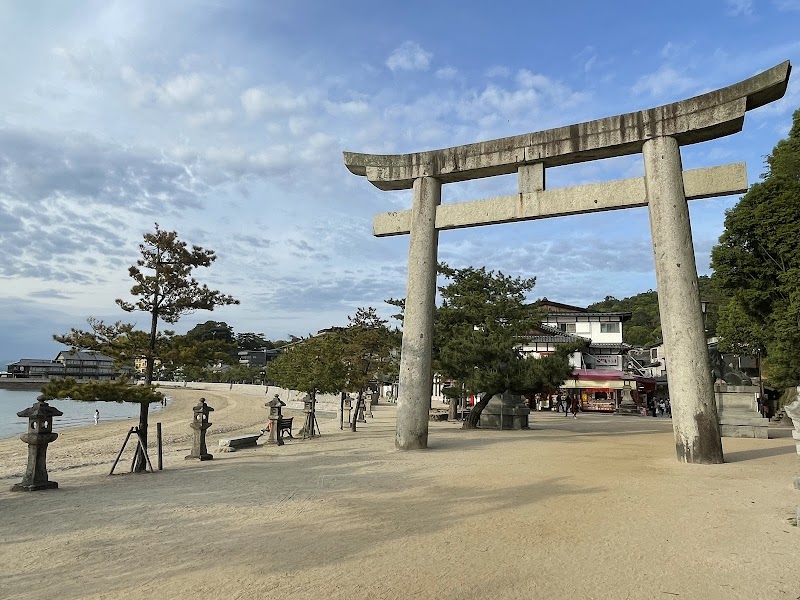
Kangen-sai Festival in Hatsukaichi: A Celebration of Tradition Amidst Nature's Pulse
Experience the Kangen-sai Festival in Hatsukaichi, where traditional Japanese court music floats on boats across the Seto Inland Sea. This unique summer event pairs cultural heritage with natural forces, offering visitors a captivating blend of history, music, and maritime adventure.
Wear Non-Slip Footwear
Stone paths and docks around the festival area can be uneven and slippery, especially near water. Shoes with good grip ensure safer movement.
Stay Hydrated and Pack Layers
Summer evenings can bring humidity and cooler breezes off the sea. Bring water and light layers to stay comfortable through the night.
Arrive Early to Avoid Crowds
The festival draws a large crowd around sunset. Early arrival allows you to secure good viewing spots and avoid congestion.
Use Public Transport and Ferries
Accessing the festival on foot from Hiroshima via train and ferry is efficient and parking near the shrine is limited during the event.
Kangen-sai Festival in Hatsukaichi: A Celebration of Tradition Amidst Nature's Pulse
Each summer, Hatsukaichi in Hiroshima transforms into a vibrant stage for the Kangen-sai Festival, an event where water and music dance in tandem. This centuries-old festival takes place on the sacred waters around Miyajima Island, starting at dusk when boats become vessels of tradition, ferrying musicians and offerings along the wide, shimmering currents of the Seto Inland Sea.
The festival's heartbeat is the kangen, court music played on boats drifting through the waterway. Picture boats lined with shamisen, flutes, and drums, their melodies rolling over the gentle surges and breezes. The water refuses to sit still — it pushes along the procession, adding an unpredictable rhythm to the ceremony. For visitors, the experience is immersive: the salty air mixes with notes of pine from the island forests, while the horizon’s glow slowly fades into night.
Planning a visit means embracing both cultural depth and practical preparation. Getting here is straightforward; Hatsukaichi is accessible via train from Hiroshima city, with ferry services launching to the festival area near Itsukushima Shrine. Expect moderate walking: some uneven stone paths around the shrine, small inclines, and bustling crowds during peak times.
The festival thrives in an outdoor setting where natural and human elements are equally at play. The tide can turn unexpectedly, and breezes will slap at boats and onlookers alike. Proper footwear is a must—grip and balance matter when navigating docks or slightly slippery waterfronts.
Timing your visit in the evening lets you see the lantern-lit boats sail in near complete darkness, the reflections fracturing on the restless water like living light. Bring layers; temperatures drop and dampness creeps in as night deepens. Hydration and pacing go hand-in-hand — weaving through crowds and waiting along the waterfront demands steady energy.
For those with an adventurous spirit, the festival also offers nearby hikes on Miyajima. Forest trails ascend Mt. Misen, where the forest seems to watch, ancient and vigilant. The view from the summit, overlooking the festival-lit sea below, frames history and nature in a rare perspective.
The Kangen-sai Festival is more than a sight; it’s an encounter with a living tradition fiercely tied to its environment, inviting all visitors to respect the forces at work — the steady flow of the sea, the pull of history, and the pulse of shared celebration.
Nearby Trips
All Adventures
Boat Charters
Water Activities
Adventures near Hatsukaichi, Hiroshima
Discover the unique and memorable adventures that make Hatsukaichi, Hiroshima special.
Frequently Asked Questions
What is the origin of the Kangen-sai Festival?
Kangen-sai dates back to the Heian period (8th-12th century), originally a Shinto ritual to offer prayers for safe sea voyages and abundant harvests, combining court music with sacred boating ceremonies.
Can visitors board the boats during the festival?
Boat access is restricted to performers and festival officials to preserve the ceremony's sanctity. Visitors watch from designated piers and the shore.
Are there any safety concerns during the festival?
While largely safe, visitors should exercise caution on wet and uneven surfaces near water, avoid overcrowded areas, and heed all event staff instructions.
Is there a recommended time to arrive for the best festival experience?
Arriving at least an hour before sunset allows good viewing spots as the boats set off with lanterns, maximizing your chance to experience the atmospheric lighting and sounds.
What wildlife might I see around Miyajima during the festival?
Sika deer roam freely on Miyajima, often near paths and shrines. Birds like kingfishers and herons patrol the shoreline, their movements a quiet counterpoint to festival sounds.
Are there any environmental efforts associated with the festival?
Local organizers emphasize preserving the bay’s cleanliness and minimizing waste, encouraging visitors to respect nature and use provided recycling stations.
Recommended Gear
Non-slip Walking Shoes
Provide necessary grip on wet stones and docks, essential for safe festival participation.
Light Layers
For cooling evenings, a lightweight jacket or long sleeve helps maintain comfort as temperatures drop.
Reusable Water Bottle
Keep hydrated throughout the warm festival day and evening, particularly important in humidity.
Portable Insect Repellent
Useful for warding off mosquitoes hovering near waterfront areas after sunset.
Local Insights
Hidden Gems
- "The quiet observation deck behind Itsukushima Shrine offers less crowded views of the festival boats."
- "A short hike to the Daisho-in Temple, with lantern-lined paths leading to peaceful forest areas."
Wildlife
- "Sika deer known for their curious yet cautious behavior."
- "Seasonal migratory birds such as herons at dawn and dusk along the shoreline."
History
"Kangen-sai Festival is a living relic of Heian-era court culture intertwined deeply with Shinto beliefs and Japan’s maritime history, symbolizing respect for natural forces."
